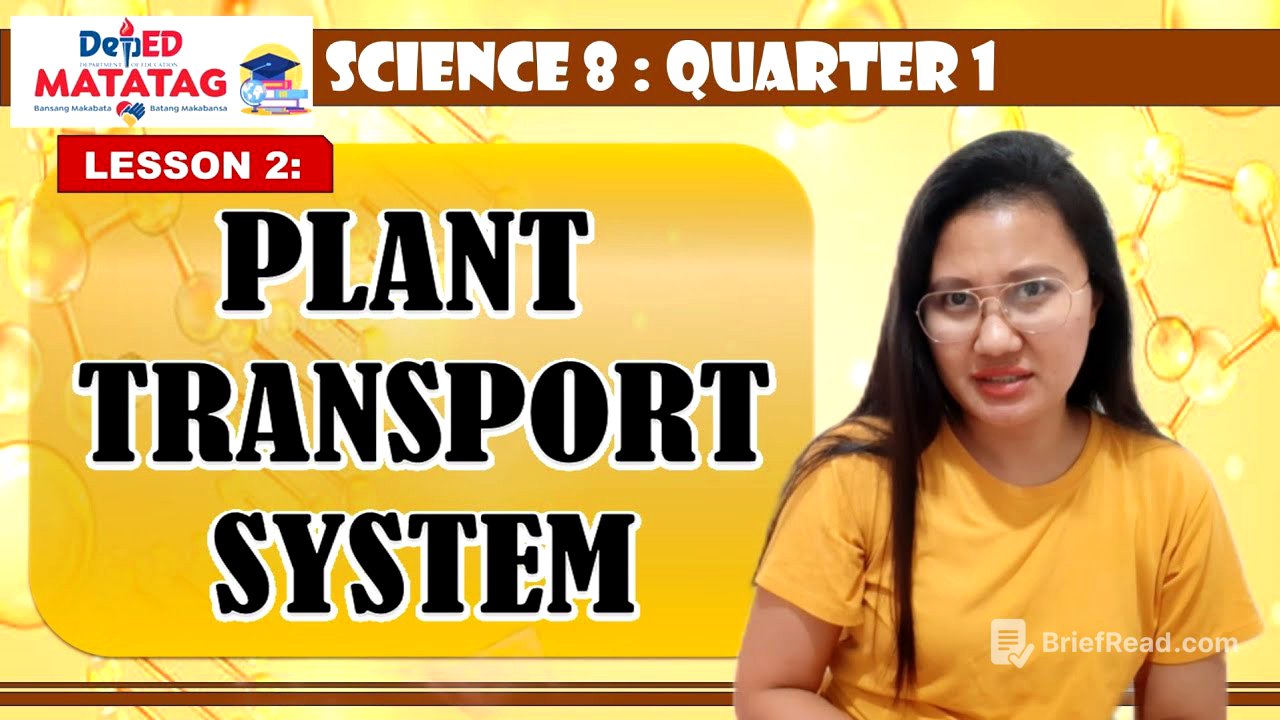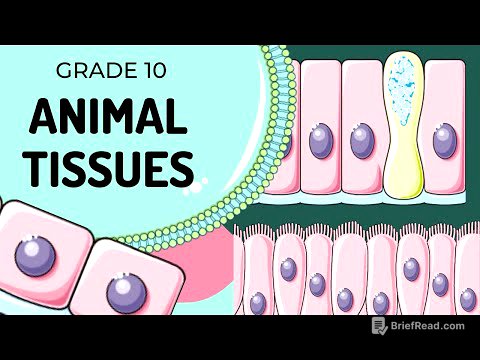TLDR;
This video explains the plant transport system, detailing how plants move water, minerals, and food throughout their structure. It covers the functions of different plant parts like roots, stems, leaves, flowers, and fruits, and introduces specialized tissues such as xylem and phloem. The video also discusses processes like photosynthesis, transpiration, translocation, and the role of guard cells in regulating gas exchange and water balance.
- Plant transport system moves water, minerals, and food.
- Roots absorb, stems transport, leaves photosynthesize.
- Xylem and phloem are specialized transport tissues.
- Transpiration and translocation are key transport processes.
- Guard cells regulate gas exchange and water balance.
Introduction to Plant Transport Systems [0:00]
The video introduces the plant transport system, which is responsible for moving water, minerals, and food throughout the plant. This system involves specialized plant parts that work together to support the plant's survival, growth, and reproduction. The process begins with the roots absorbing nutrients from the soil, which then travel upward through the stem to different parts of the plant.
Functions of Plant Parts [2:26]
The video details the functions of various plant parts. Roots absorb water and minerals from the soil, anchor the plant, and initiate root pressure to push water upwards. Stems serve as the main passageway for water, nutrients, and food, containing vascular bundles like xylem and phloem, and support leaves and flowers. Leaves are the primary site for photosynthesis, containing stomata for gas exchange and transpiration, which helps pull water up from the roots. Flowers are mainly for reproduction, receiving sugars from the leaves to support growth and seed development. Fruits and seeds receive food and nutrients to support fruit development and store energy for seed germination.
Specialized Tissues: Xylem and Phloem [7:31]
The video explains the roles of xylem and phloem, the specialized tissues in plants. Xylem transports water and minerals upward from the roots to the leaves and is composed of dead, hollow cells forming tubes. Phloem transports sugar and food produced in the leaves to all parts of the plant and is made of living cells, including sieve tubes and companion cells. Xylem has a one-way flow, while phloem has a two-way flow. Xylem conducts water and dissolved nutrients upward and helps form the woody element in the stem, while phloem conducts sugar and other metabolic products downward from the leaves.
Translocation and Guard Cells [8:56]
The video discusses translocation, which is the transport of soluble food material from one part of the plant to another. This process involves the transfer of nutrients from areas like the leaves to other parts such as the stem and roots. Additionally, the video explains the function of guard cells, which are specialized cells that border a stoma and regulate gas exchange and water loss. Stomata are tiny openings or pores in plant tissue that allow for gas exchange, and guard cells control the opening and closing of these stomata to balance the flow of gases and water in the plant.









